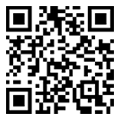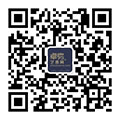
展览海报
「零」
Zero
2019 大浦当代艺术馆开幕展
2019 Pening exhibition
开幕酒会 Opening Reception:
2019年4月29日下午4点
展览时间 Exhibition time:
2019年4月30日~7月30日
展览地址 Exhibition Address:
成都天府新区华阳街道向阳街79号 大浦当代艺术馆 A空间
策展人 Curator:
毛唯辛 / 何雨
项目执行馆长 Executive director :
马利
参展艺术家 Exhibition artist(按照拼音排序):
董金玲 何利平 计文于 x 朱卫兵 金锋 贾煜 申凡 史金淞 刘广云 (中国/德国) 蒂姆.乌尔里希斯(德国) 乌苏拉.纽格鲍尔(德国)
Dong Jinling He Liping Ji Wenyu&Zhu Weibing Ja Yu Jin Feng Shen Fan Shi Jinsong Liu Guangyun Timm Ulrichs Ursula Neugebauer
主办单位:
大浦当代艺术馆
零
——成都大浦当代艺术馆开幕展
“零”作为一个数词也是暗合一个起始,不存在的无,正是无之所在。“零”也是事物的平衡点,它是空无与万有的交汇处,它位于正数和负数的中心,它因而更是坐标系统的枢纽,让我们得以安全地在坐标系统上定位,来回穿梭。就艺术而言,旨在强调参展艺术家一以贯之的工作方法和线索,从形式到内容,就个人经验在心理和精神上的表现,都有相同的倾向即不玩弄泛滥的符号,华丽的技巧。他们不再记录或再现某一表象,而是从个人经验出发观照内心精神世界回归艺术本体,自觉不自觉地向“零”回眺。
本次展览邀请了来自中国和德国共10位当代艺术家。他们根据各自的创作方式与状况,结合中国、德国两个国家呈现出的东西方文化的不同所具有的特殊性,将这种共性与差异性、特殊性进行视觉上的转换。为此,我们借助“零”的概念来强调两国艺术家相互之间的认知与表达。策划具有实验性、深入性、纯粹性的小规模的艺术展览更具有现实性。而此次参展作品涵盖当代绘画、雕塑、装置及影像多媒体等方面。以全方位多媒介的角度解析艺术与艺术家之间的相互依存的互文性,还原艺术家于纯粹,并思考艺术在跨越自身中的转折与拓展。引发对社会生活的思考,用图像性,观念性成为当代艺术潜在的价值取向。
正在抵制着全球化倾向的形态各异的文化和知识力量,不仅存在于国家层面,也存在地区性和个体层面。一方面,它们阻止了全球化混合不同文化并抹杀差异性导致的那种严重的无趣感;另一方面,它们也实现着一种互相链接、鲜有冲突的全球化社群。这在任何情况下都需要被重新审视——首先,这是否是一个现实的梦想?其次,是否值得怀有这样的梦想?
在这里,“零”还关联了作为当地文化地标的艺术馆本身的建筑风格样貌。是苏男初建筑师和香港朱竞翔建筑师团队的有效策划与合作,也是成都大浦当代艺术馆一切从零开始的观念起始与未来行动自信。
策展人:毛唯辛
Zero
——Tuff Contemporary Art Museum OpeningExhibition
As a number, zero is an agreed-upon beginning, but it is also nothingnessand non-existence; it is the precise site of nothing. Zerois the balancingpoint for all things; it is the place where everything and nothing meet. It islocated at the center of the positive and negative numbers, and as such, it isthe center of the coordinate system, helping us to safely situate ourselves sothat we may move around within that system. In art, this idea aims to emphasizethat the participating artists have consistent working methods and themes. Fromform to content, they exhibit similar tendencies in their psychological andspiritual expressions of personal experience—they do not resort to a flood ofsymbols or dazzling technique. They do not record or represent objects;instead, they begin from personal experience and reference their internalspiritual worlds as they return to art itself, consciously or unconsciouslylooking back to zero.
Based on the artists’ past creative methods and circumstances, thisexhibition presents ten Chinese and German contemporary artists, bringingtogether the unique traits that arise from cultural differences between theEastern and Western countries of China and Germany. The artists work in theirown ways, but they all visually transform these similarities, differences, andunique characteristics. To this end, we used the concept of “zero” to emphasizethe ideas and expressions of artists from these two countries, and it was morerealistic to plan a small-scale art exhibition that would be experimental,deep, and pure. Works in this exhibition cover contemporary painting,sculpture, installation, video, and multi-media. From this comprehensive arrayof media, we can analyze the intertextuality of the interdependence of art andartists, recovering artistic purity and considering the transitions andexpansions that art has undergone in transcending itself. They inspire thoughtabout life and society, and they use pictures and concepts as potential guidingvalues for contemporary art.
Cultural and intellectual forces resistingglobalization exist on the national level, but they also exist on the regionaland individual levels. On one hand, these forces obstruct the grave monotonythat arises from the blending of different cultures and the obliteration oftheir differences. On the other hand, they achieve a globalized society that isinterconnected and seldom clashes. Regardless, all of this needs to bere-examined: First, is this a real dream? Second, is this dream worth having?
“Zero” is also connected to the architectural style of thismuseum, a local cultural landmark. The museum is the result of effectiveplanning and collaboration by architect Su Nanchu and Zhu Jingxiang’s Hong Kongarchitecture team. Tuff Contemporary Art Museum began from zero, and we haveconfidence in its conceptual beginnings and future directions.
Curator
Mao Wei Xin






 皖公网安备 34010402700602号
皖公网安备 34010402700602号